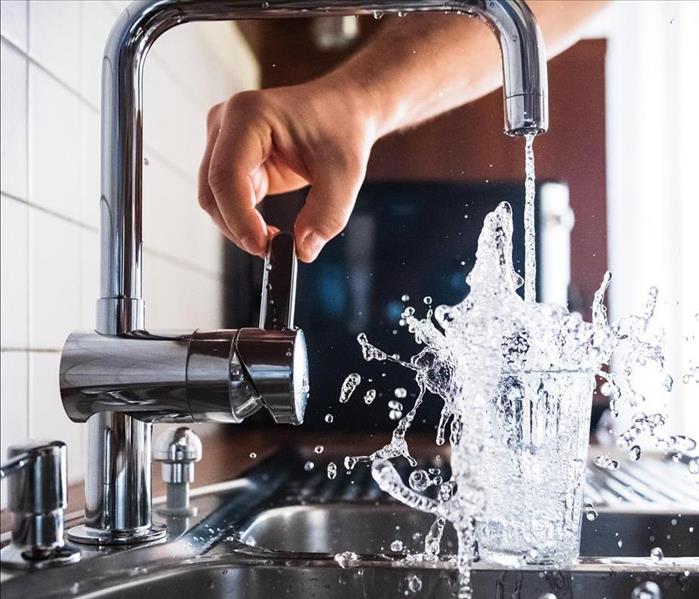3 Common Sources of Water Damage in the Kitchen
9/1/2020 (Permalink)
No area of the home is completely immune to water damage; it can occur anywhere. The kitchen is particularly at risk for water damage due to the amount of water required for everyday tasks such as washing dishes and preparing meals. Because water damage can have devastating consequences, it is beneficial to understand which areas of the kitchen are at the greatest risk for leaks. Keep reading to gain more information about 3 areas of the kitchen that most frequently experience leaks that could lead to water damage.
- The Refrigerator and Ice Maker
During the summer, a cold, refreshing glass of water makes all the difference on a hot day. The refrigerator and ice maker make this possible by producing ice, but ice makers seem to frequently generate leaks. From improper installation to parts becoming damaged or worn-out, ice makers can leak for a handful of reasons. Puddles of water on the floor beneath the fridge and ice maker are usually good indicators that there is a leak. To prevent water damage, be on the lookout for water on the floor and make sure that the refrigerator and ice maker undergo regular maintenance and inspection.
- The Dishwasher
We load and unload our dishwashers in order to clean silverware, plates, and cups on a daily basis, sometimes even multiple times a day. The amount of water required to carry out this task is tremendous and combined with the fact that the dishwasher is used so frequently, dishwashers pose a significant threat to the kitchen. Dishwashers can create water damage by leaking or flooding as a result of using the wrong type of detergent, a bent or broken dishwasher door latch, or the dishwasher overfilling with water. Watch out for puddles of water underneath the dishwasher, as it may be the sign of a leak.
- The Sink
The sink is probably the first kitchen appliance that comes to mind when you think of water usage. We use the kitchen sink to fill up a cup of water, wash our hands, and wash dishes, among many other tasks. Water damage can occur when parts of the sink become corroded or when the drain or faucet leaks. About every 6 months, it is beneficial to take a look at the pipes beneath the sink and check for leaks as well as damaged sink parts in order to prevent water damage coming from the sink.
Because of the often costly and devastating effects of water damage, such as structural damage and mold and mildew growth, it is important to do everything in your power to avoid water damage. However, if you do experience water damage in your kitchen, don’t worry. SERVPRO and our team of water damage specialists are here for you. We will arrive on the scene quickly with our advanced drying equipment and techniques in order to make your kitchen water damage “Like it never even happened,” and bring your kitchen back to normal. Call SERVPRO of Metro Pittsburgh East today at (412) 672-5400 and for more information about our water damage services, click here.




 24/7 Emergency Service
24/7 Emergency Service
